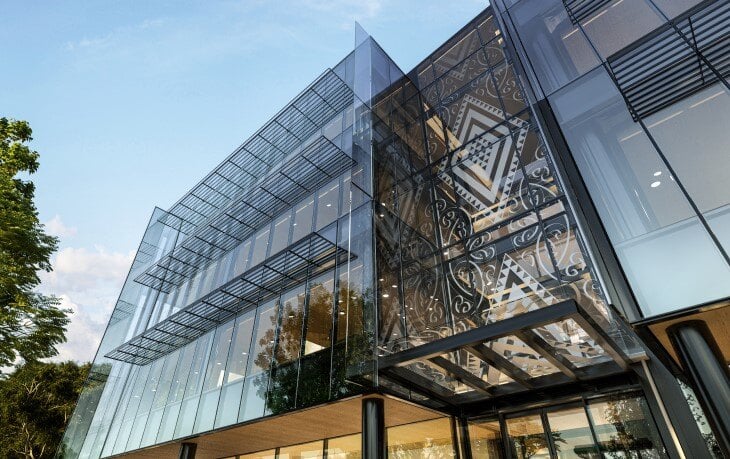Photo by Baptiste Marconnet
New Zealand's largest companies face a shift in how they consider climate and our transition to a low carbon future.
Legislation currently before parliament, if approved, will require some of New Zealand's largest companies and organisations to making climate-related disclosures as soon as the 2022 financial year. This mandatory reporting will apply to around 200 large organisations including:
-
all registered banks, credit unions, and building societies with total assets of more than $1 billion all managers of registered investment schemes with more than $1 billion under management
-
all licensed insurers with more than $1 billion total assets under management, or annual premium income greater than $250 million
-
all equity and debt issuers listed on the NZX
-
crown financial institutions with greater than $1 billion total assets under management.
Overseas incorporated organisations will be required to make disclosures if they are over the above thresholds.
Many businesses face significant physical and transitional risks from climate change and yet many are unaware or failing to provide information to investors on its impacts. The Productivity Commission has suggested that information barrier is driving "an ongoing and systemic overvaluation of emissions-intensive activities", leading to poor decision making, mispricing of assets, and impeding investment in low-emission, resilient activities needed for Aotearoa's 2050 zero carbon target.
Climate change means businesses risk stranded assets in sunset industries, property and physical asset damage, disruption to supply chains, changing consumer demands, and reputation risks as we transition to a low-emission economy. This is why it's key these things are considered and are transparently and comparably reported.
Currently organisations in New Zealand provide limited or no information on the climate change risks to their business. The goal is to ensure the effects of climate change are routinely and consistently considered, to help climate reporting entities demonstrate their consideration of climate issues, and smooth the transition to a low emissions economy.
What will be disclosed?
The External Reporting Board, in forthcoming guidance, will provide a standard model for companies to report on their relevant climate disclosures. These will be developed in line with the recommendations of the Task Force on Climate-related Financial Disclosures (TCFD).
The framework is structured around four core elements of how organisations operate:
-
governance
-
strategy
-
risk management
-
metrics and targets
The recommendations are considered international best practice for climate-related financial reporting and are already being used voluntarily by organisations in New Zealand and around the world.
As noted by PwC, implementing these recommendations within a business will take some time and require leadership teams to think strategically.
"For this reason the TCFD recommendations are best seen as the parameters within which climate change risk, identification, management and reporting can be shaped, but they do not provide an explicit guide on how to get there."
Whichever format the reporting takes, it will likely complement company Environmental, Social, and Governance (ESG) strategies, as well as reporting against the Sustainable Development Goals.
The role of buildings: Easy reporting through transparent, comparable third-party certification
Our buildings are the most obvious assets set to face the physical effects of climate change. Accounting for as much as 20% of our greenhouse gas emissions, they also provide an opportunity to those with property to show leadership and transition to a low carbon future.
While many of the reporting requirements will require new systems, measurement and processes to be created, building assets already have industry-backed, trusted, and independent ways to prove sustainability credentials and benchmark performance. In recent years uptake across both the residential and commercial property sectors has grown rapidly, and some of the country's largest developers have committed to building to these standards.
These standards can be used to demonstrate assets are more resilient to the physical risk brought about through climate change; helping to ease overheating risk, improve water efficiency for times of drought, and reduce surface water run off, reducing the risk of localised flooding events. Some clients, such as Taranaki DHB have also undertaken the Green Star guidance for assessing climate change risk assessments and setting out a plan of how to adapt.
Homestar and Green Star both include guidance on efficiency and resilience to climate change so as to better prepared for the physical risks brought about by climate change.
For those creating entire neighbourhoods, Green Star Communities provides a guide to considering climate resilience both in physical design, but also ongoing governance and management.
We would argue the biggest risk when it comes to buildings is in the transition to zero carbon. As was noted in the NZGBC and the Green Building Council of Australia report 'The value case for sustainable industrial buildings', buildings that are not resilient to climate change or changing regulatory and economic environments may end up as stranded assets, or at the very least, uncompetitive in a sector that is beginning to respond to the climate change challenge. Analysis undertaken of London office stock found that 10% of office buildings could be unusable when new energy efficiency rules come in from 2023.
This year we certified New Zealand's first zero carbon performance building, a huge achievement by Argosy which paves the way for future zero carbon efforts and demonstrates what's possible. The zero carbon tool provides not just a benchmark of current emissions, but also certainty that any residual emissions are offset.
Through NABERSNZ companies have been able to benchmark their annual office energy use, providing accurate and comparable reporting to boards and investors about their assets. As certification is issued on a scale of 1 to 6 Stars, NABERSNZ also provides an annual snapshot of a company's energy efficiency efforts and demonstrates clearly whether improvements have been made. It also provides clarity to investors looking to decarbonise. From offices, this is moving to other building types are also looking to measure and benchmark their performance through Green Star Performance.
NABERSNZ has already been mandated for the buildings Government departments lease and many in the private sector are using it across their portfolio.
A similar commitment has been made by an increasing number of government departments to build new buildings to Green Star standards. Green Star certification has been used for more than 200 commercial and community buildings across Aotearoa and provides a trusted benchmark of sustainable design and construction.
Source: The case for sustainable healthcare
Green Star offers organisations the independent, internationally recognised certification they need to have the confidence their assets help cut construction emissions, are future-proofed and reporting-ready for the TCFD requirements, as well as global initiatives such as GRESB14 and the Net Zero Carbon Buildings Commitment.
For those investing in new builds, Green Star proves a commitment to best practice sustainable design and construction and provides an industry recognised benchmark of those efforts. As more organisations respond to demands for greater clarity and transparency regarding environmental, social and governance (ESG) performance, climate-related risk, or setting their own carbon reduction or net zero goals, they are increasingly using certification systems such as Green Star to demonstrate progress and assurance.
We are seeing a number of clients certify to Green Star including some the country's largest developers
Similarly, Kāinga Ora is helping lead the charge for sustainable homes, committing to Homestar and has recently started its first joint Homestar – Passive House development. We're seeing the likes of Bupa, Oceania, and Ōtautahi Community Housing Trust also building to these standards, as well as some of the major builers ech as Fletchers, Universal Homes and Jalcon.
As with Green Star, Homestar has become best practice among many in the industry. Created by the sector and regularly reviewed and updated, the latest version of Homestar also has a clear focus on carbon, providing assurance that carbon reduction is front of mind throughout any development.
When it comes to sustainable homes and buildings there are a huge number of benefits for the planet, for the health of those using them, and for the bottom line through things like lower running costs.
For the purposes of those covered by the mandatory disclosure requirements, there is major benefit through sustainable construction as currently available certification provides a ready form of reporting already understood and taken up by the sector, as well as by local and central government.
Independent certification supports streamlined reporting and meets the needs of investors looking for trusted and proven measures to back claims of sustainable investment-ready assets. Additionally, it provides an opportunity to share achievements and lessons learnt with industry and the wider community.
Those that can get to lower carbon faster and evidence it transparently will be better placed – buildings are in a key position to help.



